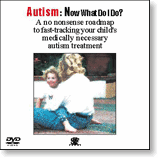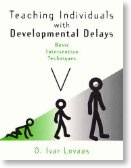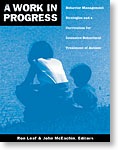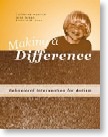Is it a game-changer from the M.I.N.D. Institute?
06/09/11 18:19
Yesterday, I read about the most amazing finding from a online news story and started to get really excited. Researchers from the Autism Phenome Project at the UC Davis MIND Institute, reported that they’ve found two different kinds of autism that are biologically distinct. One type of autism is said to be linked to enlarged brains and regression at eighteen months. This type of autism occurred only with the boys in the study. The second group of children observed were found to have immune systems that are compromised.
My first instinct was to uncritically accept this finding because the MIND Institute is reputable, the conference looks legitimate, and because finally it looks like we are starting to understand what causes autism (not one cause, but rather, many different causes at play). Many of us have been dissatisfied with the whole idea that autism is considered one condition. The medical community still looks at autism today much like physicians looked at elevated body temperature in the nineteenth century. Back when physicians did not understand what causes disease, they would say that the person had come down with “Fever.” We now know “Fever” is not an illness, but rather, a symptom caused by all kinds of distinct diseases.
I wanted to see in more detail what the researchers actually found; however, when I scanned the article, to look for the peer-reviewed journal where the finding was published, I realized that my enthusiasm was premature. This finding is only to be presented at a conference put on by the Autism Association of Western Australia and an Australian government funded advisory board. Neither of these organizations are academic, neuro-science organizations. In other words, two non-academic agencies organized this conference.
Once the conference is over, I assume these researchers are going to submit their findings to a peer-reviewed journal. That’s where the real scrutiny will occur. We are going to have to wait for the peers of these neuro-scientific researchers to analyze the findings and put them through the scientific wringer to make sure they hold up under substantial evaluation.
If this finding survives peer-review, then it has the potential to be a game-changer in terms of diagnosis, treatment and eventual cure. We’ll just have to wait and see.
My first instinct was to uncritically accept this finding because the MIND Institute is reputable, the conference looks legitimate, and because finally it looks like we are starting to understand what causes autism (not one cause, but rather, many different causes at play). Many of us have been dissatisfied with the whole idea that autism is considered one condition. The medical community still looks at autism today much like physicians looked at elevated body temperature in the nineteenth century. Back when physicians did not understand what causes disease, they would say that the person had come down with “Fever.” We now know “Fever” is not an illness, but rather, a symptom caused by all kinds of distinct diseases.
I wanted to see in more detail what the researchers actually found; however, when I scanned the article, to look for the peer-reviewed journal where the finding was published, I realized that my enthusiasm was premature. This finding is only to be presented at a conference put on by the Autism Association of Western Australia and an Australian government funded advisory board. Neither of these organizations are academic, neuro-science organizations. In other words, two non-academic agencies organized this conference.
Once the conference is over, I assume these researchers are going to submit their findings to a peer-reviewed journal. That’s where the real scrutiny will occur. We are going to have to wait for the peers of these neuro-scientific researchers to analyze the findings and put them through the scientific wringer to make sure they hold up under substantial evaluation.
If this finding survives peer-review, then it has the potential to be a game-changer in terms of diagnosis, treatment and eventual cure. We’ll just have to wait and see.












